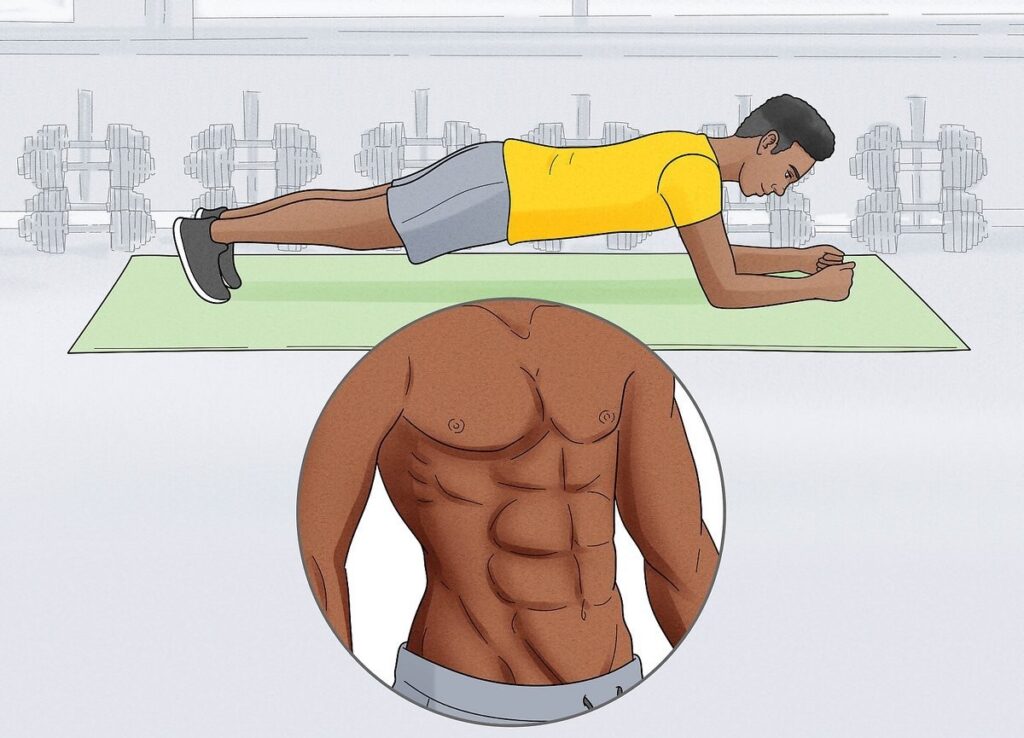
The plank: simple in appearance, surprisingly challenging to hold, and incredibly rewarding when included in your routine. This isometric exercise has steadily gained popularity in recent years, promising improvements in core strength, posture, and even mental focus. But what exactly happens to your body when you commit to a daily plank practice? Let’s dive into the science and benefits behind this powerful exercise.
Core Strength: The Foundation of Movement
When you think “plank,” your mind likely goes straight to your abs. And for good reason! Planks primarily target your deep core muscles – the transverse abdominis, rectus abdominis, obliques, as well as your hip flexors. A strong core translates to better functional movement in your daily life, whether it’s lifting a heavy box or simply standing for prolonged periods.
Posture Powerhouse
Poor posture – a modern-day epidemic fueled by desk jobs and screen time. Planking to the rescue! By strengthening your core, shoulders, and back muscles, your body naturally aligns itself into a more upright posture. You’ll stand taller, your shoulders will roll back, and that nagging back pain may start to diminish.

Metabolic Booster
While planks are considered an isometric exercise (meaning you hold a static position), they burn more calories than you might think. Engaging your core, legs, and arms simultaneously activates multiple muscle groups leading to a slight increase in your metabolic rate, even after you’ve stopped holding the plank.
Mind-Body Connection
Holding a plank isn’t just a physical challenge, it’s often a mental one. Focusing on maintaining proper form while the seconds tick by builds mental fortitude and resilience. You may find this translates to increased focus and determination in other areas of your life.
So, How Long Should I Plank?
Here’s the good news: you don’t need to hold a plank for minutes on end to reap the benefits. Beginners should focus on proper form, starting with shorter holds of 10-30 seconds. As your strength increases, you can gradually work your way up to longer durations. It’s much better to plank correctly for a short time than to compromise your form for the sake of holding it longer.
Important Considerations
- Form is King: Ensure your body forms a straight line from your head to your heels. Avoid sagging in the hips or arching your back, as this can lead to injury.
- Breathe: It’s tempting to hold your breath during a plank, but try to maintain steady, controlled breathing throughout the exercise.
- Listen to Your Body: Pushing yourself during exercise is admirable but know your limits. If you experience sharp pain, stop immediately.
The Plank: Your Transformation Tool
The beauty of the plank lies in its adaptability. Beginners and seasoned fitness enthusiasts alike can find value in this versatile exercise. As you get stronger, explore plank variations for an extra challenge.
Don’t underestimate the power of consistency. Dedicating just a few minutes to planking every day can revolutionize your posture, core strength, and overall athletic performance. If you’re ready to say goodbye to back pain, and hello to greater movement and focus, let the plank become your daily ritual.
Let me know if you’d like more fitness content ideas or detailed guides on plank variations!